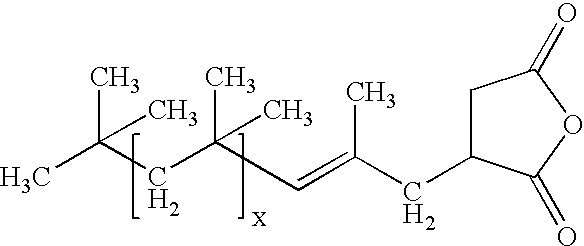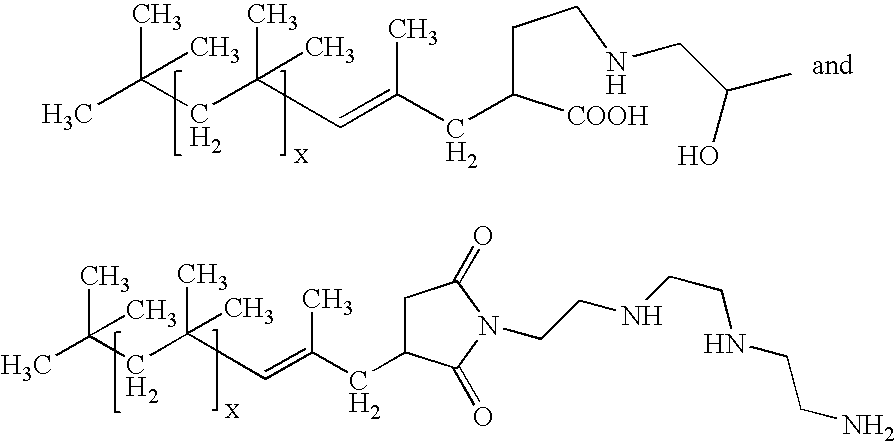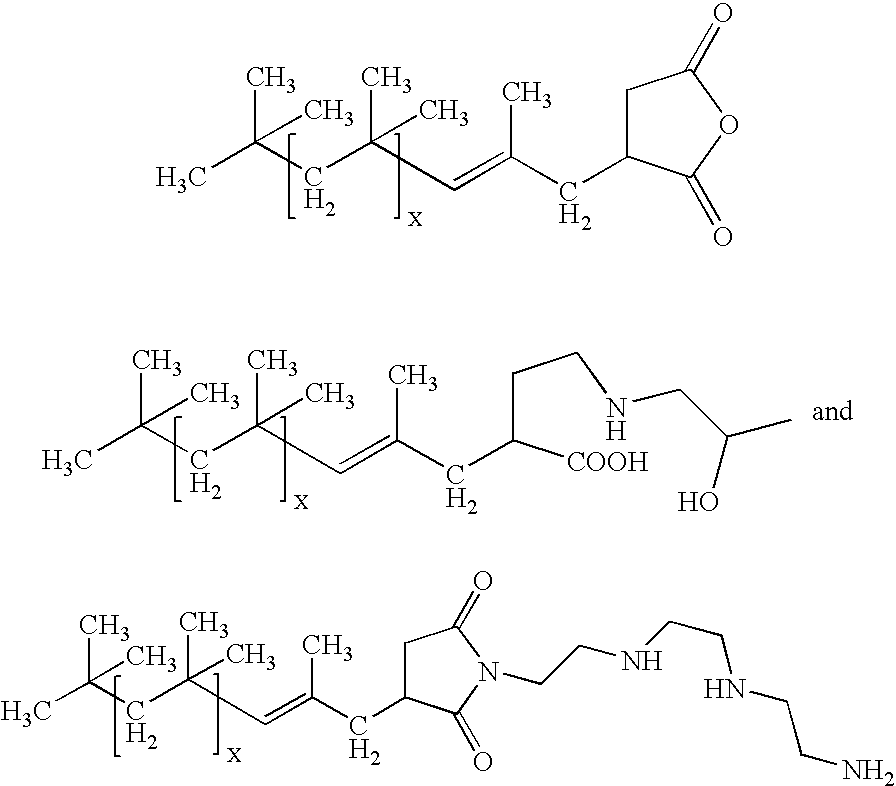Hydrophobic metal and metal oxide particles with unique optical properties
a technology of metal oxide particles and hydrophobic metals, applied in the direction of dyeing process, solid balls, sport apparatus, etc., can solve the problems of poor optical performance, adverse adhesion, environmental resistance, optical clarity, etc., and achieve the effect of improving clarity and viscosity
- Summary
- Abstract
- Description
- Claims
- Application Information
AI Technical Summary
Benefits of technology
Problems solved by technology
Method used
Image
Examples
Embodiment Construction
[0022]The following materials were used to conduct the Examples below.
Materials:
[0023]Zinc oxide—30 nm zinc oxide[0024]Polyisobutenylsuccinic anhydride (PIBSA)—Glissopol SA, BASF[0025]Oronite OL 375—adduct of PIBSA with polyamine, Chevron[0026]Oronite OL 11000—adduct of PIBSA with polyamine, Chevron[0027]Chemccinate 1000AF—adduct of PIBSA with glycerin, Lubrizol[0028]Chemccinate 2000—adduct of PIBSA with triethanolamine, Lubrizol[0029]Nano ZnO S44Z—aqueous dispersion of 30 nm ZnO, Air Products[0030]Tego Dispers 752W—graft polymer dispersant, Degussa[0031]Polystep B-27—ethoxylated nonylphenol surfactant, Stepan Corp.[0032]Neoprene 842A—polychloroprene latex, Du Pont[0033]Hybridur 570—urethane-acrylic polymer dispersion, Air Products[0034]Nanocryl S—acrylic latex, Micronisers Ltd.[0035]Joncryl 77—acrylic latex, S. E. Johnson
Standard Procedure for Treatment of ZnO With PIBSA:
[0036]Ten grams of PIBSA was dissolved in 200 grams of toluene. Ninety grams of ZnO nanopowder was added to the ...
PUM
| Property | Measurement | Unit |
|---|---|---|
| diameters | aaaaa | aaaaa |
| particle size | aaaaa | aaaaa |
| diameter | aaaaa | aaaaa |
Abstract
Description
Claims
Application Information
 Login to View More
Login to View More - R&D
- Intellectual Property
- Life Sciences
- Materials
- Tech Scout
- Unparalleled Data Quality
- Higher Quality Content
- 60% Fewer Hallucinations
Browse by: Latest US Patents, China's latest patents, Technical Efficacy Thesaurus, Application Domain, Technology Topic, Popular Technical Reports.
© 2025 PatSnap. All rights reserved.Legal|Privacy policy|Modern Slavery Act Transparency Statement|Sitemap|About US| Contact US: help@patsnap.com



